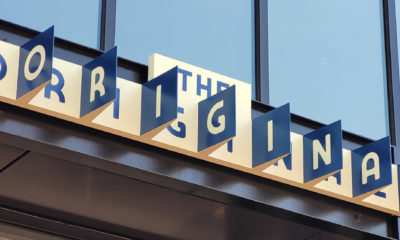
Though I’m not a NASCAR stock-car-racing enthusiast, I respect the association’s business model. In 2006, several ST staff members and I visited Michigan Speedway for a race. I marveled at NASCAR’s fan-friendly approach toward its fans. Within an hour of the race, fans could walk from the grandstand down to pit row, see the cars up close, and interact with drivers and teams. Good luck getting into a locker room before a MLB or NFL game.
Yet, NASCAR speedway amenities often rate as Spartan compared to other professional sports leagues. Seating areas, which often surpass 100,000, almost entirely comprise hard, metal bleachers reminiscent of high-school stadiums, and concession areas are, usually, sparsely spread out. We were fortunate enough to sit in a skybox for that Michigan Speedway race; according to several accounts I’ve heard, if you sit in the grandstand, it’s a hot, noisy, smelly experience.
For decades, February’s NASCAR Daytona 500 has debuted the NASCAR Sprint Cup stock-car-racing season. To infuse the event’s rich tradition with more creature comforts that modern sports fans expect, the Intl. Speedway Corp., the parent company that operates Daytona Intl. Speedway and several other tracks, is investing in “Daytona Rising”, a $400 million renovation of the track, which will provide wider, more comfortable seats, better sightlines and improved gathering spaces.
New signage and environmental and sponsorship graphics, which represent $6 million of the project’s cost, will be installed over three phases. Working with Rosetti (Detroit), the architect, and general contractor Barton Malow (Columbus, OH), Infinite Scale (Salt Lake City) developed the Speedway’s environmental-graphic design, and Jones Sign Co. (DePere, WI) won the contract to fabricate its signage.
Founded in 2002 by designers who had previously worked together to develop environmental graphics for Salt Lake City’s Olympic 2002 Winter Games, Infinite Scale now plies its trade exclusively within the sports industry. Jim Baehr, Infinite Scale’s principal for the Daytona project, highlighted key elements of a successful plan for stadium EGD.
Advertisement
“We began our relationship with Daytona officials nine years ago by creating a signage master plan,” he said. “For such large properties, it’s important to be zoned as a sports and entertainment district. This circumvents having to go before the planning commission or zoning board for every sign change. While [Daytona International Speedway has] had remodeling efforts underway consistently over the past six years, our involvement with Daytona Rising began in 2011.”
He continued, “Some aspects of creating signage for a racetrack are unique, but some are universal to all sports venues. The need to direct fans quickly to their destination, and to create solid venue branding, is required for all sports facilities. However, racetracks are different because there’s no permanent naming-rights sponsor signage involved. The sponsorships exist with the individual racecar teams and localized areas. Because fans will be wearing an array of colors for the favorite teams, rather than just one color for the home team, as in other sports, permanent signs must be as neutral and simple as possible. For our directional signage, we specified black-and-white signage, with grayscale graphics, decorated on aluminum and secured to structural steel. Bold, simple signage speaks to “elegant aggression”, which is appropriate for motorsports.”
Jones Sign was among a select group of fabricators and installers invited to bid on the project. Jim Merriman, the shop’s director of achitectural sales, likened the Daytona project to a recent sign-program upgrade Jones Sign completed for the Green Bay Packers’ home at Lambeau Field, another venue that was steeped in tradition, but in similar need of a fan-friendly facelift.
“The branding message per se hasn’t really changed, but the scope of it has been expanded, from ADA and room-ID signage to LED-illuminated channel letters,” he said. “From a fabrication and installation perspective, the Daytona job was interesting because the facility has so much exposed steelwork inside. We had to be careful about attaching signs without drilling holes. As a result, a custom clamping solution was developed to provide the necessary strength without compromising
structural integrity.”
The first phase of the signage project, which will include some of the wayfinding and ADA-compliant signage, will be in place before this year’s Daytona 500 race. The bulk of the environmental graphics, which will include identification for the five concourse injectors, new channel letters and signage for interior gathering spaces, will be in place for the grand unveiling at the 2016 race.
Because of some non-disclosure agreements, not all sign programs could be visually conveyed at presstime. Here’s a selection of some of the elements available for public consumption. ST looks forward to the opportunity feature Daytona International Speedway’s environmental graphics in early 2016.
Advertisement


 Tip Sheet1 week ago
Tip Sheet1 week ago
 Photo Gallery2 days ago
Photo Gallery2 days ago
 Ask Signs of the Times4 days ago
Ask Signs of the Times4 days ago
 Real Deal1 week ago
Real Deal1 week ago
 Benchmarks6 days ago
Benchmarks6 days ago
 Women in Signs1 week ago
Women in Signs1 week ago
 Photo Gallery1 week ago
Photo Gallery1 week ago
 Women in Signs1 week ago
Women in Signs1 week ago








